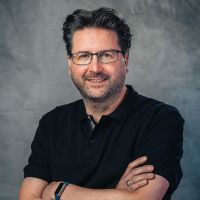
Alec De Grand
Soy Alec De Grand, ocupo el cargo de gerente de producto para escáneres de portaobjetos virtuales y microscopios verticales en Olympus. Llevo más de 10 años en Olympus, gestionando productos clínicos, iniciativas de mercadotecnia, cursos relativos al procesamiento de imágenes y exposiciones comerciales.

Bülent Peker
Hola. Me llamo Bülent Peker, y soy el experto designado para la microscopía de escaneo láser. Durante mi doctorado en química física, desarrollé un interés absolutamente nuevo por la microscopía y la fotónica, que me llevó a trabajar en la microscopía de dos fotones de resolución temporal; desde entonces, esta pasión me acompaña.
Llevo más de 13 años en Olympus y he contribuido a la introducción y comercialización de sus microscopios de escaneo láser de última generación. Me fascina particularmente la aplicación de los sistemas multifotónicos y las posibilidades de personalización de los sistemas de escaneo láser.

Chunsong Yan
Hola, me llamo Chunsong Yan. Soy gerente de desarrollo comercial en ciencias de la vida para Olympus Australia & New Zealand (Nueva Zelanda). Actualmente me desarrollo como responsable de los sistemas de escaneo confocal, multifotónico, lámina/hoja de luz y portaobjetos. Entré a Olympus en el año 2003 y he ocupado varios cargos con el fiel compromiso de ofrecer la mejor solución de Olympus a nuestros clientes.

Daniel Bemmerl
Soy Daniel Bemmerl. Puedo ayudarle con cualquier tema asociado a los análisis 3D de alto contenido y al procesamiento de imágenes de organoides. Me integré a Olympus como especialista de aplicaciones en microscopía TIRF y cribado de alto contenido; pero, ahora me especializo en softwares de análisis 3D.
Estudié biología molecular y de células madre del desarrollo; no obstante, desde muy temprano me di cuenta que me interesaban más los aspectos técnicos de la investigación y, sobre todo, el procesamiento de las imágenes en sí más que los especímenes analizados. Llegué a Olympus Life Science debido al interés que despertaba en mí la fórmula de trabajar fuera de un laboratorio y establecer un vínculo entre el cliente y el desarrollo. Me complacerá responder a cualquiera de sus preguntas sobre el procesamiento de imágenes 3D, y ayudar a mejorar su proceso de adquisición de imágenes para que pueda enfocarse en su investigación.

Dr. Nicolas Bourg
Hola. Soy el Dr. Nicolas Bourg, Director Técnico (CTO) y Cofundador de Abbelight. He sido designado experto para la microscopía de localización de molécula única (SMLM), también conocida como nanoscopía, que incluye técnicas como PALM, dSTORM, SPT-PALM y DNA-PAINT.
Me he formado como ingeniero optrónico y seguido un doctorado en Ciencia Biofotónica, otorgado por la Universidad Paris-Saclay, a través del cual he podido trabajar en una exclusiva técnica nanoscópica 3D dotada de una resolución sin precedentes. Junto con mi equipo de investigación, deseábamos transmitir todo el conocimiento adquirido durante mi doctorado y creamos Abbelight: una empresa de nueva creación que tiene como objetivo generar una nanoscopía más potente y de total accesibilidad para cualquier biólogo principiante en microscopía. Mi mandato es responder a todas sus preguntas sobre la nanoscopía; por lo tanto, no dude en contactarme.

Flavio Giacobone
Hola, soy Flavio Giacobone, responsable de las soluciones para el escaneo de portaobjetos destinadas a los mercados de Olympus Europa. Las imágenes siempre han formado parte de mi ser; desde que obtuve mi título en ingeniería biomédica y llegué a Olympus, he podido experimentar de primera mano el cambio a la tecnología digital, que acontece en muchos campos clínicos y de investigación. Mi experiencia en el procesamiento de imágenes se desarrolló en un inicio con el primer escáner de Olympus, el dotSlide. Esto me ha permitido ser testigo incontestable del avance al que se ha llegado desde aquel primer producto.

Ganesh Kadasoor
Soy Ganesh Kadasoor, y formo parte del sector de Procesamiento de imágenes de última generación de Olympus (Olympus High End Imaging) desde los últimos 15 años en India. Poseo una licenciatura y maestría en Ciencias de la Vida y he cursado un doctorado en Entomología Médica, ofrecido por la Universidad de Mysore en India. Me incorporé a Olympus como especialista de microscopía confocal; me he encargado de todos los sistemas de imágenes de última generación, como los sistemas para el procesamiento de imágenes de células vivas, de escaneo láser confocal, TIRF, confocal de disco giratorio, súper resolución y multifotón. Actualmente, trabajo como gerente de nivel nacional (sector de Soporte para Aplicaciones) de Olympus Medical Systems India Ltd, en Bangalore. Este cargo implica llevar a cabo programas de capacitación para científicos, académicos y redes de distribuidores en todo el país. También, tengo bajo mi responsabilidad la organización de varios talleres de microscopía e imágenes, seminarios y seminarios web que se llevan a cabo en India, además del soporte que otorgo en los cursos de microscopía a nivel nacional e internacional como tutor/formador.

Heiko Gäthje
Hola, me llamo Heiko Gäthje. Mi experiencia en microscopía de fluorescencia confocal y campo amplio, además del procesamiento de imágenes 3D, comenzó cuando trabajaba como biólogo; mi enfoque se orientó a estudiar el desarrollo neuronal de insectos y la estructura del ácido siálico que une las proteínas neurales en mamíferos.
Formo parte de Olympus desde el año 2004 y ejerzo como formador de microscopía en la Academia de capacitación de Olympus desde el año 2008. Bajo mi responsabilidad, se lleva a cabo la concepción e introducción de herramientas de aprendizaje digital. También apoyo e imparto cursos de formación asociados a la microscopía en el Laboratorio EMBL Heidelberg y sobre microscopía avanzada en la Escuela de Invierno de Zúrich. Estas actividades me llevan a responder muchas preguntas relacionadas con el procesamiento y análisis de imágenes.

Irina Rakotoson
Hola, soy Irina. Me encantaría dialogar con usted sobre la microscopía de lámina/hoja de luz. Poseo una maestría en biología belular, fisiología y patología especializada en envejecimiento, otorgada por la Universidad Paris-Descartes. Antes de formar parte de la empresa PhaseView en calidad de gerente de producto, trabajé para un laboratorio de investigación de neurociencias (SPPIN) con el objetivo de optimizar los protocolos de limpieza destinados a la instalación central de microscopía.

Junsung Kim
Hola, me llamo Junsung Kim y soy especialista de producto para microscopios confocales destinados al mercado de Olympus Korea. Poseo una maestría en bioingeniería, otorgada por la Universidad de Corea. Formo parte de Olympus desde el año 2014 y proporciono soporte para aplicaciones de clientes que cuentan con microscopios confocales y multifotónicos de Olympus.

Kathy Lindsley
Soy Kathy Lindsley, especialista de aplicaciones para Olympus y encargada del soporte destinado a sistemas de procesamiento de imágenes basados en cámaras. Poseo una licenciatura en Ciencias, bajo la concentración de Bioquímica, otorgada por la Universidad Estatal de Iowa. Me incorporé a Olympus en el año 2006 como representante de ventas en el campo de procesamiento de imágenes para la investigación, e hice la transición en el año 2012 al grupo de aplicaciones de ciencias de la vida. Antes de formar parte de Olympus, trabajé 15 años como asistente de investigación para una investigación académica, a partir de la cual gané experiencia sobre la técnica de fijación en parche de membrana (patch clamp), el procesamiento de imágenes de calcio, los cultivos tisulares y la inmunohistoquímica.

Lauren Alvarenga
Hola, me llamo Lauren Alvarenga y soy gerenta de producto para sistemas de procesamiento de imágenes destinados a la investigación en Olympus. Actualmente soy responsable de la gestión de softwares de imágenes, como también de microscopios invertidos y de súper resolución. Poseo una licenciatura en Ciencias, bajo la concentración de Comunicación y Fotografía Biomédica, otorgada por el Instituto de Tecnología de Rochester.
Regulación postranscripcional del transportador de fosfato renal Npt2a por la hormona paratiroidea. Formo parte de Olympus desde el año 2015 y presto apoyo a la línea de productos FLUOVIEW en las siguientes regiones: EE. UU., Canadá y América Latina.

Manoel Veiga
Hola. Me llamo Manoel Veiga y soy parte del equipo Olympus que implementó la tecnología de aprendizaje profundo en software. Llegué a Olympus en el año 2017; he desarrollado experiencia en la tecnología de detección de alto contenido, análisis de imágenes y aprendizaje profundo. También soy experto en el procesamiento durable de imágenes de fluorescencia.
El interés por el análisis de datos despertó en mí durante mi doctorado en química física, el cual desarrollé aún más después de descubrir el poder de las redes neuronales de convolución y las increíbles tareas analíticas de imagen que estas últimas son capaces de tratar.

Minju Kim
Hola, soy Minju Kim, especialista de producto para microscopios biológicos en Olympus Korea. He trabajado para Olympus desde el año 2010 como especialista de producto y ventas de alto nivel para los sistemas de procesamiento de imágenes de células vivas y fluorescencia. Asimismo, soy responsable de los programas de formación para los distribuidores de Corea del Sur.

Rebecca Bonfig
Hola. Soy Rebecca Bonfig, directora de producto en microscopía confocal de Olympus. Completé mi tesis de posgrado en el departamento de fisiología y biofísica de la Universidad de Louisville, cuyo estudio trataba sobre la regulación postranscripcional del transportador renal de fosfato Npt2a por la hormona paratiroidea. Formo parte de Olympus desde el año 2015 y presto apoyo a la línea de productos FLUOVIEW en las siguientes regiones: EE. UU., Canadá y América Latina.

Shohei Imamura
Soy Shohei Imamura, gerente de proyectos estratégicos en Olympus. Cuento con cuatro años de experiencia en ventas dentro del ámbito de la microscopía científica, y siete años en planificación de productos, especialmente softwares, como también en la gestión y ejecución de proyectos estratégicos. Poseo una licenciatura en Comercio de la Universidad Meiji en Japón.

Srivats Hariharan
Hola! Me llamo Srivats Hariharan, también conocido como Hari. Soy director de producto para el ámbito de microscopía confocal, multifotónica y de súper resolución en Olympus Singapur. Poseo un licenciatura en Ingeniería Mecánica otorgada por la Universidad Tecnológica de Nanyang, ubicada en Singapur; y, he adquirido experiencia trabajando para laboratorios de investigación biomédica y para la sede madre de A * STAR Microscopy Platform, en donde apoyé a investigadores con respecto a tecnologías de procesamiento de imágenes de células vivas y confocales, y ayudé a configurar una microscopía de súper resolución mono molecular y de lámina/hoja de luz.
Formo parte del equipo de Ciencias de la Vida (Life Science) de Olympus Singapore desde el año 2011 en calidad de gerente de producto, además he sido responsable de apoyar a clientes de investigación y socios comerciales en el sudeste asiático y Taiwán.

Stefan Marawske
Hola, soy Stefan Marawske, su experto en microscopía de súper resolución. Durante mi doctorado en química física, creé un microscopio doméstico dedicado a ofrecer una súper resolución basada en la localización y el seguimiento de partículas. Me fascinó el hecho de que estos métodos pudieran superar el famoso límite de Abbe y sean capaces de resolver estructuras que antes no podían ser identificadas.
Trabajo para Olympus desde hace más de 7 años y he sido de manera general responsable de gestionar sistemas de procesamiento de imágenes de última generación, como con la tecnología TIRF o de disco giratorio. Estos sistemas suelen tener un alto nivel de flexibilidad, ya que pueden combinarse con muchos dispositivos distintos para diversas aplicaciones; por lo tanto, si necesita ayuda para determinar una configuración específica, contácteme.

Takeo Ogama
Soy Takeo Ogama, planificador sénior de productos y estrategias, como también gerente de producto para cámaras microscópicas de Olympus. Poseo ocho años de experiencia de trabajo, adquiridos en el departamento de investigación y desarrollo a través de varios productos, incluidas las cámaras, como también ocho años de experiencia en planificación, mercadotecnia y gestión de productos. Antes de llegar a formar parte de Olympus, obtuve mi maestría en Física de Neutrinos, otorgada por la Universidad de Osaka, en Japón.

Wei Juan Wong
¡Hola! Soy Wei Juan Wong, especialista de productos para el mercado clínico y de investigación. Poseo una licenciatura en Física y he adquirido experiencia trabajando en un laboratorio de investigación biofísica y una unidad central de microscopía. Formo parte del grupo de Ciencias de la Vida (Life Science) de Olympus Singapur desde el año 2018. He comenzado como especialista en productos, brindando soporte para las aplicaciones de clientes y he sido responsable del programa de capacitación destinado a los distribuidores de la región del sudeste asiático.

Klaus Willeke
Hello, I’m Klaus Willeke, Product Marketing Manager at Olympus Life Science Division and I’m responsible for our new X Line objectives. During my geology studies, the polarization microscope was an essential tool for determining and researching mineral compositions and structures. I was always fascinated by how colorful the world of minerals appears through a polarization microscope and how much you can discover with the help of light and good optics.
I’ve been working for Olympus for more than 22 years where I was 17 years a sales representative for industrial and life science microcopy in Germany and after that in European Product Marketing in the Scientific Solutions Division of Olympus, responsible for upright clinical and research microscopes and X Line lenses.

Dr. Hrishikesh Pai
Dr Hrishikesh Pai did his Fellowship in Reproductive Biology from the Royal Women’s Hospital, Melbourne Australia in 1989. He did his Masters in Clinical Embryology and Andrology from the Jones Institute, Eastern Virginia Medical School, USA in 2006. He has won 45 plus awards including the Honorary FRCOG from the Royal College of Obstetricians & Gynecologists, United Kingdom in 2019. Dr Pai has been the Past President of the Indian Society for Assisted Reproduction (ISAR) and is the present Director of Corporate Affairs for International Federation of Fertility Societies (IFFS). Dr Pai is the President Elect of the Federation of Obstetric and Gynecological Societies of India (FOGSI) with a membership strength of 37,000 members. It is the second largest medical body of gynecologists in the world, only second to the ACOG.
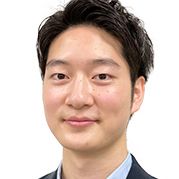
Hiroya Ishihara
Mr. Hiroya Ishihara is an Application Scientist at Olympus. He was studying the epigenetic factors involved in plant regeneration using omics and microscopy in Tokyo University of Science. Confocal and two-photon microscopy were his trusted partner at that time. Therefore, he joined Olympus to make life science more exciting with microscopes. Currently, he is working on a wide range of projects from basic research to product/sales strategy.

Dr. Gowri Balachander
Dr. Gowri Balachander is a Research Fellow at the Yong Loo Lin School of Medicine, National University of Singapore. She completed her PhD at the prestigious Indian Institute of Science, Bangalore, India where she worked on engineering 3D organotypic models for the study of breast cancer metastasis. At NUS, she currently works on morphogenetic models for human liver development and regeneration.
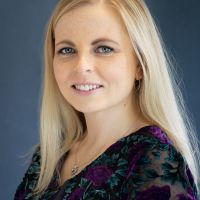
Joanna Hawryluk
Joanna Hawryluk is a product manager for Olympus Corporation of the Americas located in Waltham, MA. She has been with Olympus since 2017 within the Marketing department specializing in our 3D cell analysis software, lightsheet microscopy, electrophysiology, and our cell culture monitoring system. Dr. Hawryluk received her doctorate degree in Physiology and Neurobiology in 2016 from the University of Connecticut.
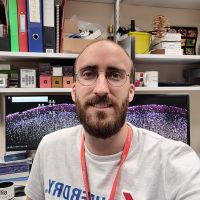
Benjamin Compans, Ph.D.
Benjamin received his Ph.D. from the University of Bordeaux. During his Ph.D., in the group of Dr. Choquet at the Interdisciplinary Institute for Neuroscience, he studied the nanoscale organization of glutamate receptors at excitatory synapse and its importance for synaptic plasticity. In 2018, he joined the lab of Professor Burrone at King’s College London for his postdoc where he investigates the molecular organization of inhibitory synapses and its role in regulating neuronal firing, a project for which he obtained a Marie Sklodowska-Curie Action postdoctoral fellowship.

Lin Guo
Lin got his PhD back in 2010 in National University of Singapore working on biophysical research. From 2009 he joined Olympus as Technical and Application specialist taking care of laser based high end imaging system. In 2012, Lin decided to move back to China and taking a position with one of the leading scientific camera manufacturers Photometrics. There, he started as application specialist, later become regional sales manager and finally scientific sales manager for Asia Pacific. In 2021, Lin moved back to Singapore, joining Olympus Singapore as the manager for product and application. Lin has a long experience of various techniques on scientific digital imaging including various camera technologies.

Angela Vasaturo
Hello, my name is Angela Vasaturo, the senior field application scientist at Ultivue. My passion for micro-biology and live-cell imaging began during my post-doc, where I was involved in the early development of multiplex IHC in Europe.
I built my expertise through extensive involvement in post-doc research focused on tumor immunology at the NCMLS in Nijmegen, NL, as well as during my position as Senior Researcher in Dr. Jerome Galon’s Laboratory of Integrative Cancer Immunology at the Cordeliers Research Center.
.png?rev=14CE)
Shogo Usui
My name is Shogo Usui and I'm product leader of CM20 at Olympus Corporation.
For over ten years, I have been an electrical engineer in the life science R&D team in Olympus Tokyo. I hold a Master’s degree in applied physics from the University of Electrical and Communication from Tokyo, Japan.
.jpg?rev=12D2)
Dr. Anne Beghin
Dr. Anne Beghin is a multidisciplinary scientist with fifteen years of extensive research experience across academia and industry. She obtained her PhD in oncology in 2007 at the University Claude Bernard in Lyon (France). She then moved to optical microscopy at the Université de Lyon, where she established the microscopy platform and developed live cell imaging solutions and image analysis services for 4 years.
In 2011, she was recruited by a biotechnology company based in Bordeaux, where she spent 3 years in charge of a tissue analysis service: from biologic samples (whole tissue sections and Tissue Micro Arrays) to image acquisition and analysis with database establishment. She has been part of the Interdisciplinary Institute of NeuroScience IINS for 3 years where she successfully developed a new platform linking the High Content Screening (HCS) approach with super resolution microscopy such as Single Molecule Light Microscopy (HCS-SMLM), a collaboration with pharmaceutical company, Sanofi. Subsequently, she moved to the MechanoBiology Institute (MBI) in Singapore to study organoids using advanced imaging and HCS. This work has resulted in a patent and publications are on-going.
.jpg?rev=339E)
Dr. Xiaotong Cui
Dr. Xiaotong Cui received his B.S. and M.Sc. from the University of Leicester, UK. He went on to receive aPh.D. from the Institute of Life Science, Kyoto University in 2018, where he worked under the direction of Prof. Osamu Takeuchi. From 2018-2020, he was a program-specific researcher in Shenzhen Digital Life Institute and ASHBi, Japan. Dr. Xiaotong has a solid background in molecular cell biology, immunology and he participated in one special program for Key Basic Research of Ministry of Science and Technology, China. Now, he serves as a Field Application Specialist in Bio-Techne China.
.jpg?rev=2687)
Dr. Kasmira Wilson
Dr. Kasmira Wilson is a general surgeon and CSSANZ trainee, having previously completed a BSc(Hons) and MBBS. She is currently undertaking a PhD through the University of Melbourne at Peter MacCallum cancer centre which focuses on translational research in rectal cancer. Her research utilises tumouroid models to explore anti-tumour immunity in rectal cancer in a novel functional cytotoxic assay.
.jpg?rev=74B7)
Dr. Dan Zhu
Dr. Dan Zhu is a professor of Huazhong University of Science & Technology, and Vice-Director of Wuhan National Laboratory for Optoelectronics. Her research interests mainly focus on tissue optical clearing imaging and applications. She is the pioneer in the field of in vivo tissue optical clearing, and also developed fast, label-compatible in vitro optical clearing methods. She has authored more than 150 papers including Science Advances, Nature Communications, et al. She is also Fellow of SPIE, and Secretary General & Vice President of Biomedical Photonics Committee of Chinese Optical Society. She serves for journals as editorial member or guest editor, including Biomedical Optics Express, Journal of Biomedical Optics, Scientific Reports, Journal of Innovative Optical Health Sciences, Frontier of Optoelectronics et al.
.jpg?rev=2811)
Dr. Graham Wright
Dr. Graham Wright holds an interdisciplinary PhD in cell biology and physics from The University of Edinburgh and an MBA from the Warwick Business School at The University of Warwick. He is the Acting Director of A*STAR’s Research Support Centre (RSC) and the Director of the A*STAR Microscopy Platform (AMP). RSC offers everything from on-demand access to sophisticated scientific instruments and services, located within varied Technology Platforms, to a research consumables webstore, playing a crucial role in powering biomedical innovation in Singapore.
Dr. Graham has extensive experience, and a strong publication record, in applying advanced light microscopy to a wide range of biomedical research projects. Outside the laboratory, he is committed to science outreach and has featured as a judge on MediaCorp’s National Science Challenge TV show, presented a TEDx talk, had microscopy images displayed on the big screen in Times Square, New York and exhibited work at the National Museum of Singapore.
.jpg?rev=73D5)
Mr. Srivats Hariharan
Mr. Srivats Hariharan is an Applications & Marketing Manager in Olympus life science team in the Asia Pacific region. He holds a bachelor’s degree in Mechanical Engineering from Nanyang Technological University, Singapore and has experience working in biomedical research labs and A*STAR Microscopy Core Facility where he supported researchers on confocal and live cell imaging technologies and help setup single molecule super-resolution and light sheet microscopes. He joined the life-science team of Olympus Singapore in 2011 as Product Manager and in-charge of supporting research customers and business partners in South-East Asia and Taiwan.
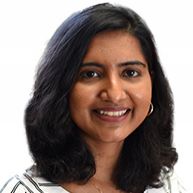
Ms. Gency Gunasingh
Ms. Gency Gunasingh completed her Master of biotechnology degree from University of Queensland in 2012 and did her Masters project under Dr. Andrew Prowse and Prof. Peter Gray at Australian Institute for Bioengineering and Nanotechnology. Her primary area of research was large scale generation of cardiac progenitors from embryonic stem cells in 3D. She then worked under Prof. Brian Gabrielli at UQ Diamantina institute on developing 3D tumour spheres in melanoma for in vitro drug testing. She currently works for Prof. Nikolas Haass at UQDI on understanding tumour heterogeneity and tumour architecture in melanoma spheroids.
.jpg?rev=2087)
Dr. Dong Gao
Dr. Dong Gao is the Principal Investigator of Shanghai Institute of Biochemistry and Cell Biology, Chinese Academy of Sciences. His research interests mainly focus on t prostate adult stem cell and the establishment of patients-derived cancer organoid biobank. He has authored more than 40 papers including Cell, Nature Genetics, Cell Stem Cell et al.
.jpg?rev=1436)
Dr. Yu Weimiao
Dr. Yu Weimiao obtained his Ph.D. from the National University of Singapore (NUS) in 2007, majoring in image processing and machine vision. He joined the Agency of Science, Technology and Research (A*STAR) in 2007. He is currently heading Computational Digital Pathology Lab (CMPL) in BII to deepen and extend the R&D with clinical and industrial partners. He is also the joint PI in IMCB leading the Computational & Molecular Pathology Lab (CMPL). His research interests are Computational Biomedical Image Analysis and Quantitative Imaging Informatics. He applied 3D image analysis solution to segment and tracking the cells in 3D to understand the developmental problem and collective cell migration mechanisms. His work was published in Nature Communication, Current biology, Nature Cell Biology, etc. To enhance the applications in clinical diagnosis/prognosis, he co-founded a biotech company, known as A!maginostic Pte. Ltd. He established a world-class joint platform for the immunodiagnosis at the tissue level. The platform allows the researchers, clinicians, and pharma to profile the patient immune signature for diagnosis, prognosis, and drug response study.
.jpg?rev=9A5C)
Dr. Motoki Takagi
Dr. Motoki Takagi received PhD from Graduate School of Agriculture and Life Sciences, the University of Tokyo in 2001. Then he continued his research as a postdoctoral fellow at Institute of Molecular and Cellular Biosciences, the University of Tokyo. He was engaged in the research of nucleic acid drugs at Genencare Research Institute, Co. Ltd. since 2002. Since 2006, he conducted drug discovery research at Biological Systems Control Team, Biomedicinal Information Research Center, Japan Biological Informatics Consortium. Since 2012, he has been researching chemical biology as an associate professor at Fukushima Medical University and became a professor in 2014.
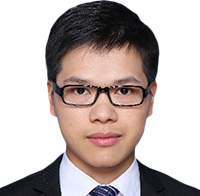
Dr. Ningbo Wu
Dr. Ningbo Wu is an Associate Professor at Shanghai Institute of immunology, Shanghai Jiaotong University School of Medicine. His research interests mainly focus on the function of intestinal stromal cells in intestinal homeostasis and related work was published in Nature and Science CHINA Life Sciences, et al.

Dr. Nuno Costa-Borges
Nuno Costa-Borges is devoted to offering quality control (QC) tests, training, and consulting services to the IVF community worldwide. With over 18 years’ experience, Nuno completed a PhD focused on improving animal cloning efficiency before joining IVI Barcelona as a clinical embryologist. Now, as cofounder and scientific director of Embryotools, Nuno is committed to developing new IVF techniques, which have led to the world’s first babies via maternal spindle transfer for infertility and to the development of the first robotic system for intracytoplasmic sperm injection successfully tested clinically.

Akira Saito
Akira studied veterinary medicine at Tokyo University of Agriculture and Technology, Japan and graduated in 2007. Shortly after, he joined Olympus as application specialist responsible for in vivo imaging systems, high-content analysis systems, and laser confocal systems to support customers in Japan. In 2013, he took over sales promotion for all Olympus life science products. From 2018, he moved to Singapore and joined to support the marketing and application support for the APAC market.
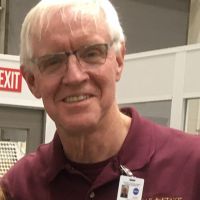
Bob McLean
Bob McLean has over 30 years’ experience as a microbiologist, during which time he and his lab have done a number of studies on surface-adherent microorganisms (biofilms). In 1998, he and his colleagues had an experiment on the space shuttle with John Glenn, in which they were one of the first research groups to show that biofilms could form in microgravity. Since that discovery, there have been a number of biofilm issues, notably instances of fouling in the water recovery system in the International Space Station and other spacecraft. In 2015, Bob, along with collaborators at Arizona State and the Johnson Space Center, received a NASA grant to study biofilm formation during spaceflight. Confocal and other types of microscopy have been instrumental in these investigations.
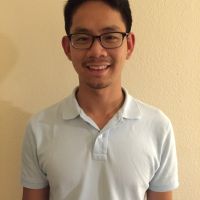
Jesse Chao
Jesse completed his Ph.D. at the University of British Columbia (UBC) in cell biology and genomics. He then continued his training at the University of California, San Diego. After, he switched his focus to developing machine learning approaches for assessing the physiological impacts of genetic variants associated with hereditary cancer at UBC. During this time, he started to develop deep learning approaches to automated phenotypic profiling based on high-content imaging data.

James Lopez
James Lopez received his Ph.D. in biomedical sciences from the University of Chicago in 2010. With nearly a decade of experience in calcium imaging, FRET, live cell imaging, and intravital imaging, James joined Olympus as a confocal and multiphoton sales representative. He later transitioned to the Olympus Life Science Applications Group, supporting confocal and multiphoton systems. Now he manages the Life Science Applications Group in the US, Canada, and Latin America markets.

Yosuke Yoneyama
Yosuke Yoneyama obtained his Ph.D. from The University of Tokyo in Japan, where he continued his post-doctoral work on insulin/insulin-like growth factor signaling with a focus on spatiotemporal control of the intracellular signaling system in the laboratory of Dr. Shin-Ichiro Takahashi. He then joined the laboratory of Dr. Takanori Takebe at Tokyo Medical and Dental University in Japan as an assistant professor. He now focuses on human organoids, in particular liver organoids, that are derived from stem cells, including induced pluripotent stem cells (iPSCs), to reconstitute multiple lineages of liver cells both for human development and modeling diseases such as non-alcoholic steatohepatitis.
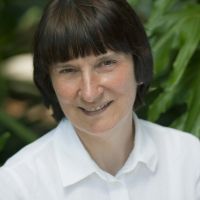
Ewa Goldys
Professor Ewa M. Goldys is Deputy Director of the Australian Research Council Centre of Excellence in Nanoscale Biophotonics (cnbp.org.au) and Professor at the Graduate School of Biomedical Engineering, the University of New South Wales, Sydney, Australia. She is Fellow of SPIE, OSA, the Australian Academy of Technological Science and Engineering (ATSE), and winner of the 2016 Australian Museum Eureka Prize for ‘Innovative Use of Technology.’ She has ongoing involvement with SPIE BIOS, the world's largest international biomedical optics meeting and SPIE's Photonics West where she serves as Track Chair in Nanobiophotonics.
Her research spans the areas of biomedical science, bioimaging, biosensing, and materials science. She developed novel approaches to biochemical and medical sensing and deployable medical diagnostics. Current projects focus on cancer nanotechnology and non-invasive high-content imaging of colors and patterns in cells and tissues.
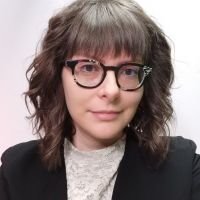
Laura Vittadello
Dr. Laura Vittadello is working as a post-doc in the physics department of the Osnabrück University in the ultrafast physics research group. Her research focus is on the fundamental study and application of a new type of marker, harmonic nanoparticles, that are specially designed for biological applications that involve nonlinear microscopy.
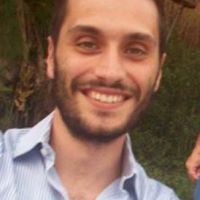
Francesco Cardarelli
After receiving his M.Sc. in Biological Sciences from the University of Pisa in Oct 2003 and his Diploma in Biological Sciences in the same year (both with honors) from SNS, Francesco Cardarelli worked at the NEST Laboratory of SNS as a Ph.D. student in Molecular Biophysics under the supervision of Prof. Fabio Beltram. He started his interdisciplinary research at the crossroads between cell biology and physics, using advanced fluorescence microscopy methods to study the intracellular transport properties of virus-derived peptide sequences. After graduating, he became a Post-Doctoral Fellow at the Laboratory for Fluorescence Dynamics, University of California at Irvine, under the supervision of Prof. Enrico Gratton, where he coordinated the research activity for the development of new spatial variants of fluorescence correlation spectroscopy to detect barriers to molecular diffusion/flow in live cells. In Dec 2010 he was hired by the CNI@NEST (IIT) as a Post-Doctoral Fellow. Back in Italy, he started working to develop new fluorescence-based imaging and analysis methods to study single molecules in complex biological systems with high spatiotemporal resolution. This research was boosted by a number of funded grants (and established collaborations) and by an independent scientific position, first at CNR as a Researcher, then at SNS as Professor in Applied Physics.
The focus of his research is on the development of new optical microscopy techniques to increase the amount of quantitative information that can be extracted from investigations on living matter. For instance, in recent years, he and his team introduced a number of new spatiotemporal fluctuation-analysis tools (iMSD, iRICS, nD-pCF, diffusion tensor analysis, etc.) to extract structural and dynamic properties of biological objects, from molecules to entire sub-cellular structures, in their complex natural environment. Such a toolbox is becoming a new paradigm for biophysical investigations at the nanoscale, as featured in the “New and Notable” section of Biophysical Journal (2016 Aug 23; 111(4): 677–678). In 2014, together with his Team, they demonstrated the occurrence of short-range protein Brownian motion in the cell cytoplasm, being among the first to challenge the current view of the structural organization of the crowded intracellular environment. Finally, by combining this toolbox with feedback-based orbital tracking, they demonstrated that even the nanoscopic and dynamic environment of intracellular organelles can be quantitatively probed.
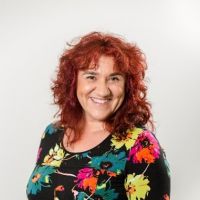
Sandrine Roy
Dr. Roy completed a double-major in Biochemistry and Microbiology followed by the completion of a Doctor of Philosophy in 2002 in the field of Molecular Biology/Cell Biology at the University of Queensland Australia. She travelled abroad to undertake a post-doctoral position at Washington University in St Louis, USA. She then returned to Australia to continue her post-doctoral studies.
With her extensive microscopy experience, she was appointed as the University of Queensland Diamantina Institute Microscopy Facility Manager in 2009 and later as manager of microscopy services at the Translational Research Institute in Brisbane until 2019.
She is now Business Development Manager at Olympus Australia, where her experience and knowledge is used to support customers both in Australia and New Zealand.
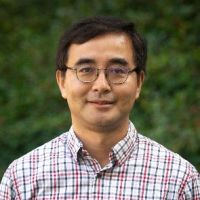
Seungil Kim
Seungil Kim, Ph.D., is a Staff Scientist and Microscopy Team Manager at the Lawrence J. Ellison Institute for Transformative Medicine at USC. Dr. Kim completed his B.S. and M.S. degrees in South Korea. He then moved to Washington University and received a doctoral degree in Developmental Biology. He carried out his postdoctoral research in the department of Cell and Tissue Biology at UCSF. Seungil has over 10 years of experience working with various in vitro/in vivo models and advanced cellular imaging techniques. His current research focus is to understand the contributions of the tumor microenvironment to drug response, using patient-derived 3D organoids as a model system. Moreover, he is developing high-throughput automated imaging methods to screen novel drug compounds in colorectal cancer.
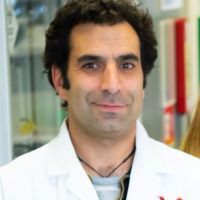
Alfonso J. Schmidt
Alfonso has a decade of experience working in a shared resource lab (SRL) with a vast knowledge in histology, fluorescent microscopy, and image analysis. His work has been focused in maximizing the capabilities of the equipment available and in creating technical protocols and training modules for the scientific community. Currently, Alfonso oversees the Histology and Bioimaging Facility as part of the Hugh Green Cytometry Centre (HGCC) at the Malaghan Institute of Medical Research in Wellington, New Zealand.
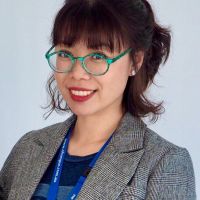
Tong Wu
Tong Wu joined Olympus in 2012 after completing her Ph.D. in China (State Key Laboratory of Fine Chemicals, DLUT). Now, Tong is a business development manager, supporting high-end microscopes in Olympus Australia. With a research background in fluorescent dyes for bio-imaging and bio-labelling, Tong Wu is enthusiastic to engage with customers’ research applications.
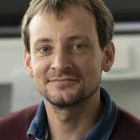
Ruben Portugues
Prof. Portugues is a neurobiologist studying sensorimotor control. His research group uses behavior, modeling, optogenetics, in vivo electrophysiology, and whole brain functional calcium imaging to dissect learning, memory, and action selection in the larval zebrafish.
Prof. Portugues studied mathematics and did his Ph.D. in theoretical physics at Trinity College in the University of Cambridge. After a short postdoctoral fellowship in physics at Centro de Estudios Cientificos in Valdivia, Chile, he joined Professor Florian Engert’s laboratory at Harvard University and switched research interests to neuroscience. In 2014 he was appointed Max Planck Research Group Leader at the Max Planck Institute of Neurobiology in Martinsried. Since 2020 Prof. Portugues is an assistant professor at the TUM.
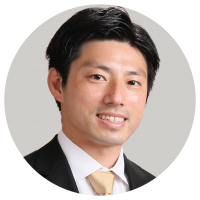
Atsuya Toda
Atsuya Toda is an assistant manager for Global Life Science Marketing at Evident. He has more than fifteen years’ experience in life science microscopy sales, sales planning, and marketing in Japan. In 2021, he moved to the Global Life Science Marketing team where he is the marketing representative for the APEXVIEW APX100 all-in-one microscope. He holds a Bachelor of Economics degree from Doshisha University, Japan.

Dr. Laura Lleras Forero
Laura Lleras Forero is the product marketing manager for cell culture products at Evident. She completed her PhD at King’s College London and undertook postdocs in Utrecht, Berlin, and Münster. She has been with Evident since 2021, supporting cell culture microscopy solutions, the SLIDEVIEW™ VS200 research slide scanner, and the APEXVIEW™ APX100 all-in-one microscope for Europe, the Middle East, and Africa (EMEA).
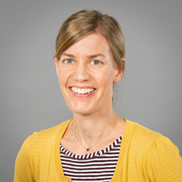
Ines Hartmann
Ines Hartmann is an application specialist for cell handling at the Eppendorf headquarters in Hamburg, Germany. She joined the company in 2008 and has worked on several topics in cell handling, liquid handling, and consumables. She obtained her diploma degree in biology at the Humboldt University of Berlin, Germany and has expertise in various laboratory techniques.
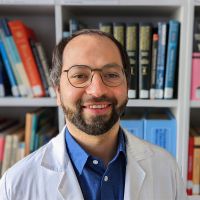
Amin El-Heliebi
Featured Speaker Amin El-Heliebi (Professor) Professor Amin El-Heliebi was educated in Graz, Stockholm and Buenos Aires and was appointed Research Professor 2021 at the Medical University of Graz, Austria. His research focus lies in molecular biomarkers, cancer research, liquid biopsy, tumor biology, and spatial transcriptomics. His overarching research question deals with understanding tumor dissemination. His research group investigates liquid biopsies, such as circulating tumor cells (CTCs) and circulating tumor DNA (ctDNA). Their overall aim is to track and trace liquid biopsies back to the originating tumor mass and identify the mechanisms involved in spreading of metastatic disease.
Pregunte a los expertos
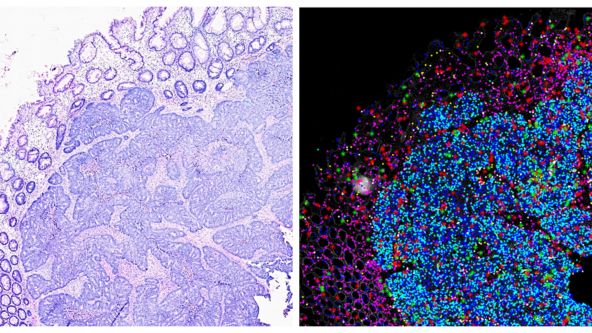
Investigating Tumor Dissemination by Spatial Transcriptomics
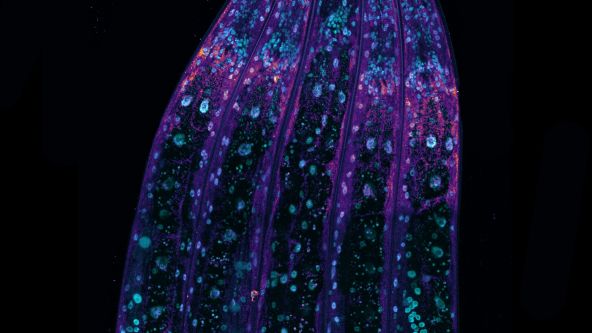
Transforming Precision Imaging: Meet the FLUOVIEW™ FV4000 Confocal Microscope
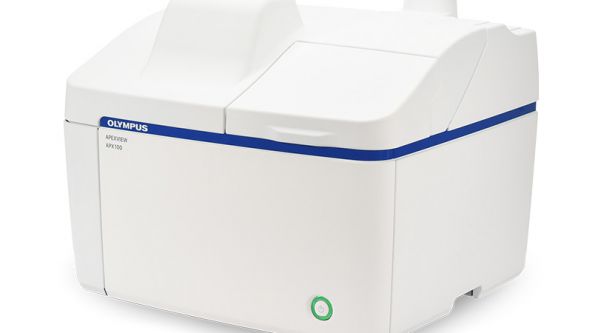
Introduction to the APEXVIEW™ APX100 Digital Imaging System
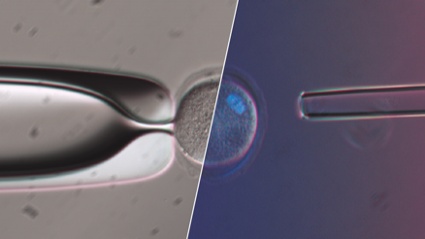
How Polarized Light Can Assist Embryologists in Clinical Routines
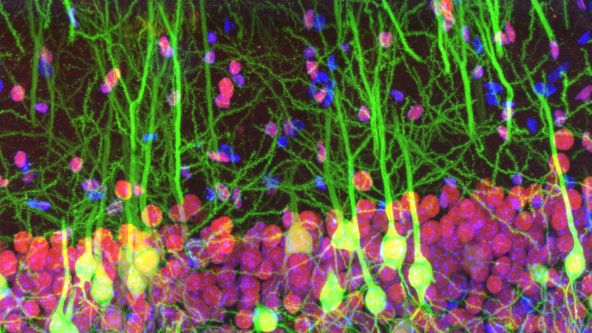
Unveiling Nanoscopic Realms: A Journey into Super-Resolution Microscopy
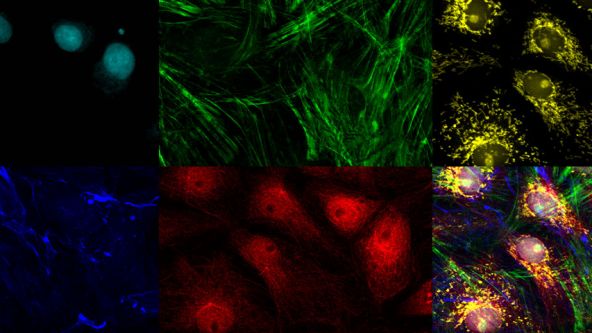
Multiplexing and Deep Tissue Imaging with NIR Confocal Laser Scanning Microscopy (Encore Edition)
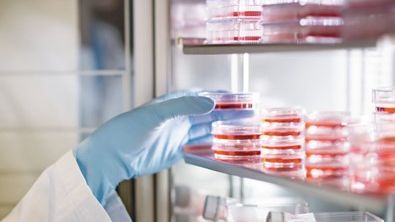
Good Cell Culture Practice—How to Improve the Reproducibility of Your Experiments
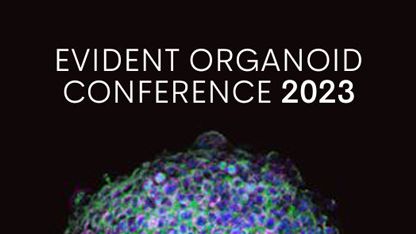
EVIDENT Organoid Conference 2023 - Looking Deeper, Capturing Complexities
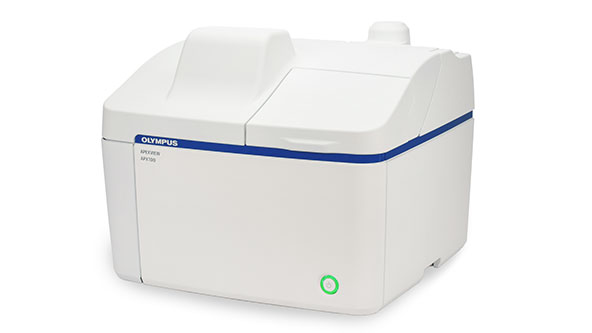
Exceptional Imaging Made Easy: Meet the APEXVIEW™ APX100 All-in-One Microscope
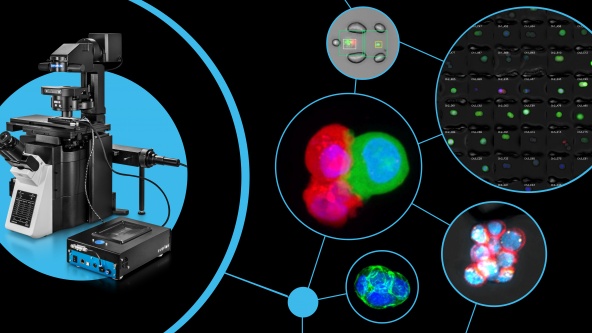
Technology Evaluation: Deciphering Cell-Cell Interactions in a 3D Microenvironment at a Single-Cell Resolution
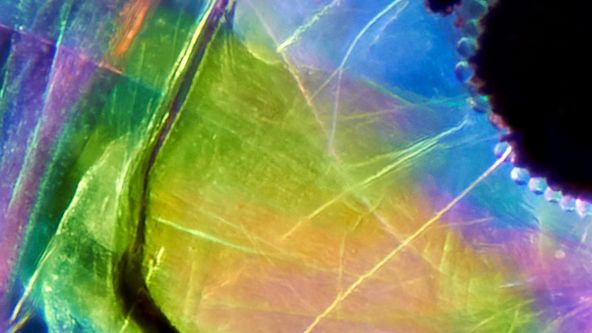
Conferencia Bioimagen de Olympus: Explorar nuevas dimensiones | Evento virtual de 3 días | 9 al 11 de marzo de 2022
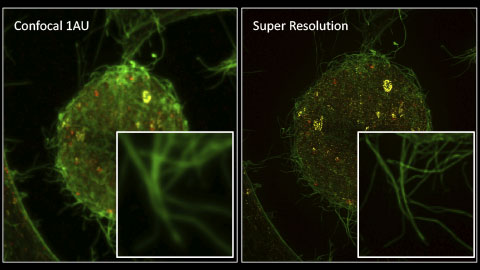
Imágenes de células vivas con superresolución: El cuadro completo de las cosas pequeñas
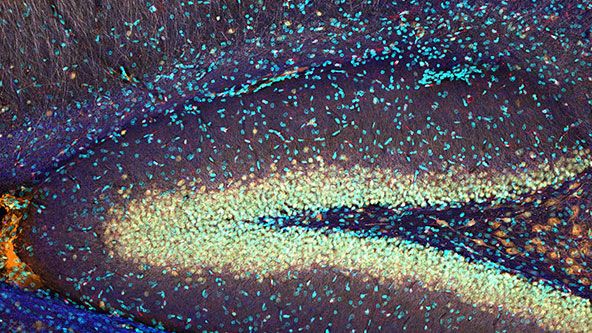
FV3000 Red Near-Infrared (NIR) Solutions for Confocal Microscopy | 2 p.m.

FV3000 Red Near-Infrared (NIR) Solutions for Confocal Microscopy | 10 a.m.
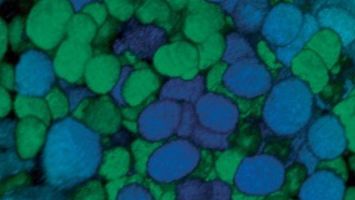
Olympus Organoid Conference 2021
.jpg?rev=3E0D)
Objetivos microscópicos: Donde acontece la magia
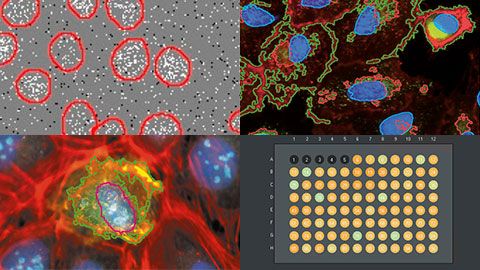
Cribado de alto contenido: Análisis personalizado simplificado
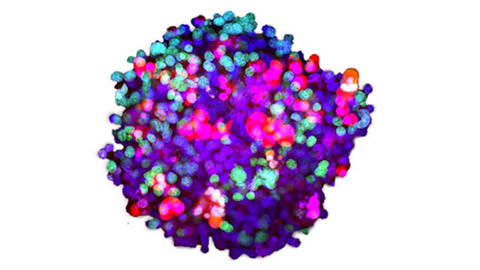
Análisis de imágenes tridimensionales de alto rendimiento de organoides y esferoides derivados de pacientes
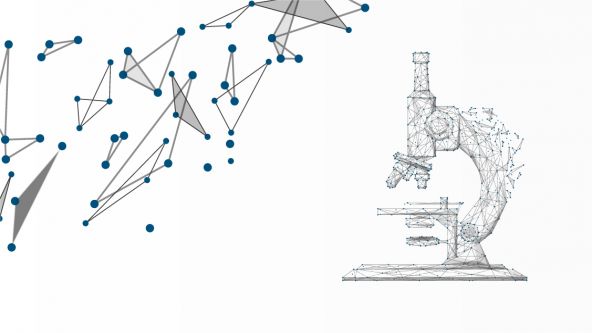
Cumbre Discovery de Olympus: Mejore su procesamiento de imágenes | Del 26 al 27 de octubre de 2021
.jpg?rev=1940)
Segunda parte: Procesamiento de imágenes digitales — Filtro de procesamiento de imágenes avanzado
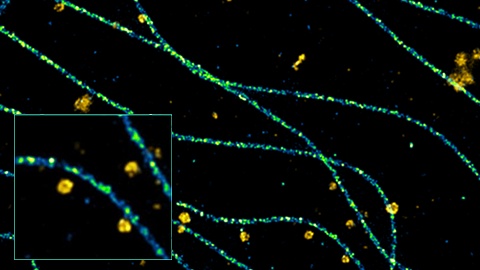
Procesamiento de imágenes de múltiples estructuras subcelulares a escala nanométrica 3D
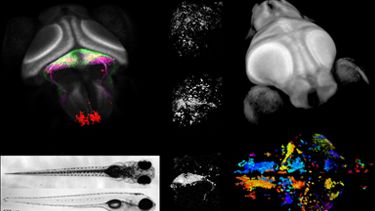
Whole-Brain Functional Calcium Imaging Using Light Sheet Microscopy
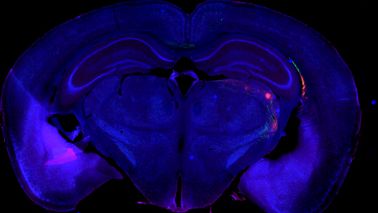
Product Demo: SLIDEVIEW™ VS200 Research Slide Scanner

Product Demo: SLIDEVIEW™ VS200 Research Slide Scanner

The Use of Multiplexing in Microscopy for Better Understanding the Skin Immune System in the Context of the Tissue

Recent Advances in 3D Imaging and AI-Driven Data Analysis

Now You Have the Power to See More

Metabolic Imaging in Langerhans Human Islets with MPE and FLIM

Product Demo: IXplore™ SpinSR Confocal Super Resolution System

In-Vivo Tracking of Harmonic Nanoparticles by Means of a TIGER Widefield Microscope

Hyperspectral and Brightfield Imaging Combined with Deep Learning Uncover Hidden Regularities of Colors and Patterns in Cells and Tissues

Product Demo: FLUOVIEW™ FV3000 Confocal Laser Scanning Microscope

Product Demo: FLUOVIEW™ FV3000 Confocal Laser Scanning Microscope

Evolution of Scientific Digital Imaging Technologies and their Applications

Deep Learning Approaches to Automated Phenotypic Profiling

Deconvolution of 3D Image Stacks

Confocal Microscopy and Its Use for a Spaceflight Experiment

Accelerating Image Analysis with TruAI™ Deep Learning Technology

A New Way of Thinking—Object Detection with Deep Learning
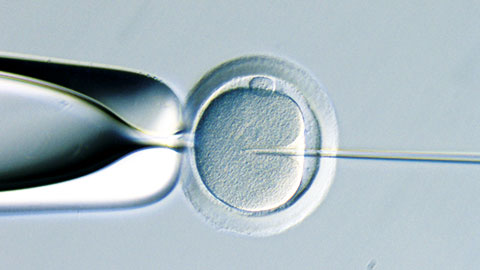
ICSI - How to improve your technique
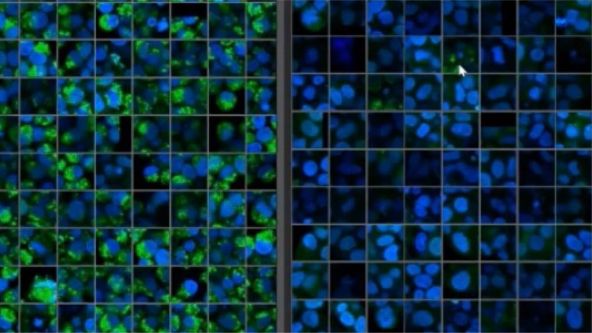
NoviSight™ Demonstration: 3D Image Analysis and Statistical Software for Organoids and Spheroids

Study the Function of Stromal Cells through Intestinal Organoid Co-Culture Technology

An In Vitro System for Evaluating Anticancer Drugs Using Patient-Derived Tumor Organoids
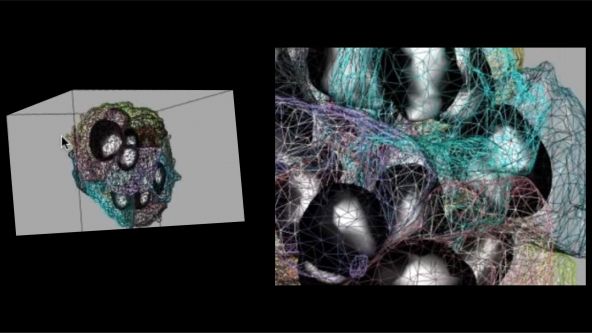
3D Segmentation for Fluorescence Images: From Qualitative to Quantitative

Prostate Cell Lineage Hierarchy and Plasticity

Investigating Spheroid Architecture Using the FV3000 Confocal Microscope

Advances in 3D Optical Imaging Technologies: An Overview

3D Microscopy: Understanding the Give and Take on Instrument Performance to Enable Informed Decisions
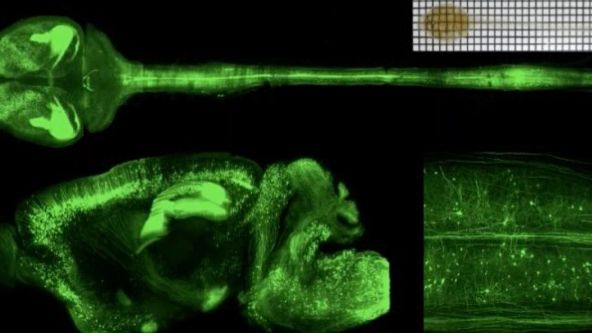
Tissue Optical Clearing Imaging: From In Vitro to In Vivo

Utilizing Tumoroids to Explore Anti-Tumor Immunity in Rectal Cancer

Converting from 2D to 3D: Bio-Techne Solutions for Your 3D Culture
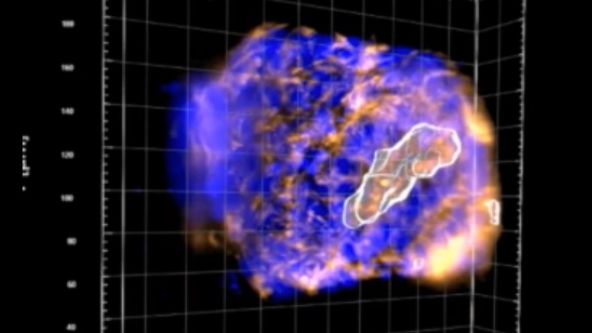
Culture and Quantitative 3D Imaging of Organoids: Challenges and Solutions
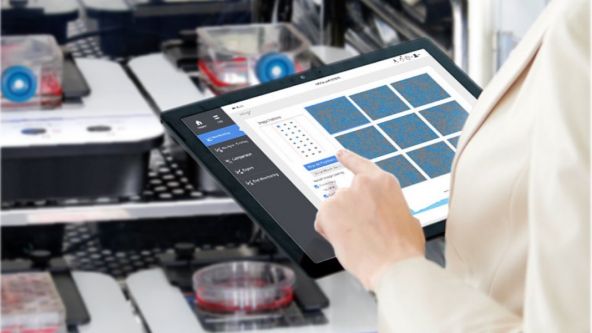
A Smarter Approach to Culturing and Nurturing Your Cells

Modern Slide Scanning: Single-cell Phenotyping on Fixed Samples (Encore Edition)
.jpg?rev=6A21)
To the Diffraction Limit and Beyond: The Nanoscale Organization of Axo-Axonic Synapses | 2 p.m.
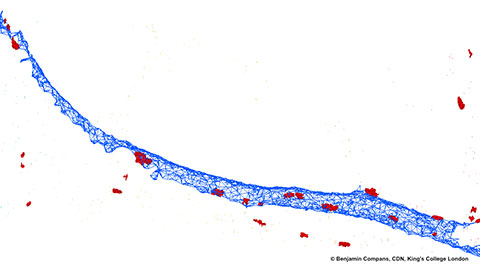
To the Diffraction Limit and Beyond: The Nanoscale Organization of Axo-Axonic Synapses | 10 a.m.
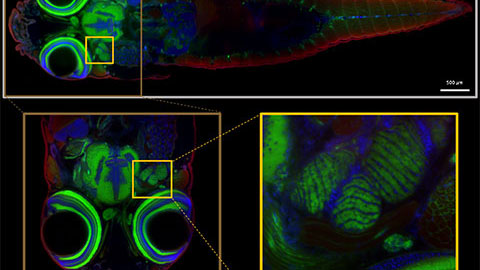
Light Sheet Microscopy – New multi-resolution and -color imaging methods
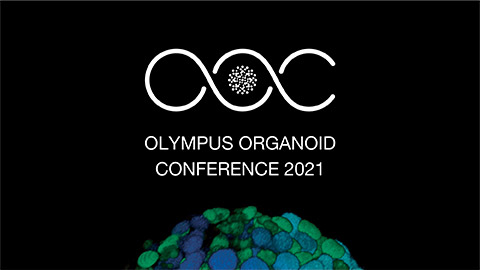
Olympus Organoid Conference: Think Deep, See Deeper | 3-Day Virtual Event | September 7-9, 2021

Create a Smarter Cell Culture Workflow

Digital Image Processing: Point and Local Operation Filters (Encore Edition)

Depth Matters: Transforming Biology for More Realistic and Meaningful Pursuits
.jpg?rev=FD74)
Microscope Objectives—Where the Magic Happens (Encore Edition)

Microscopía con lámina/hoja de luz para una observación más profunda de la vida
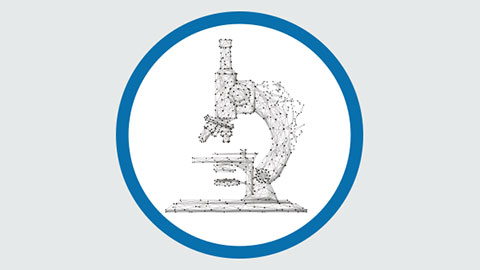
Olympus Discovery Summit—Looking Forward: A New Era of Research
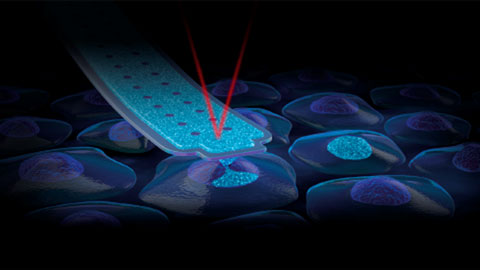
Tecnología FluidFM: Enfoque novedoso para la edición genómica por CRISPR mediante entrega intranuclear directa
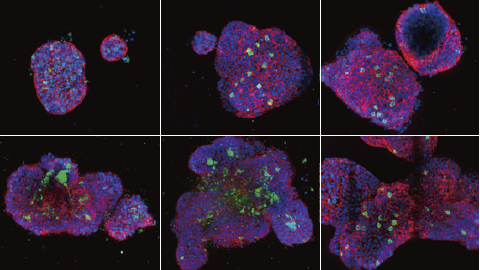
Ensayos 3D: Software inteligente, análisis reveladores
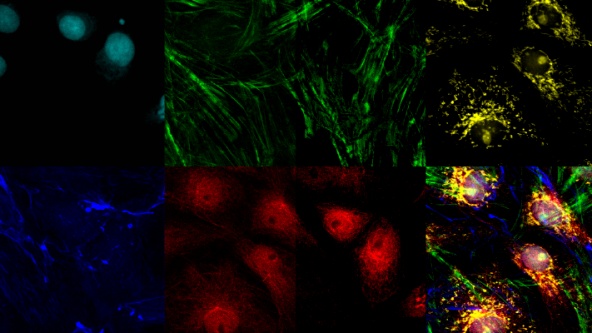
Multiplexación e imágenes de tejidos profundos a partir de una microscopía de escaneo láser confocal del infrarrojo cercano
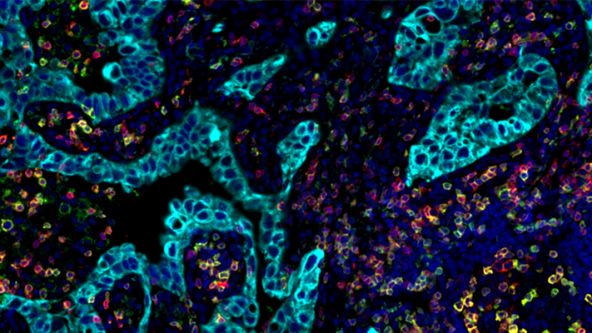
A la vanguardia del escaneo de portaobjetos: Fenotipificación de una sola célula en muestras fijas
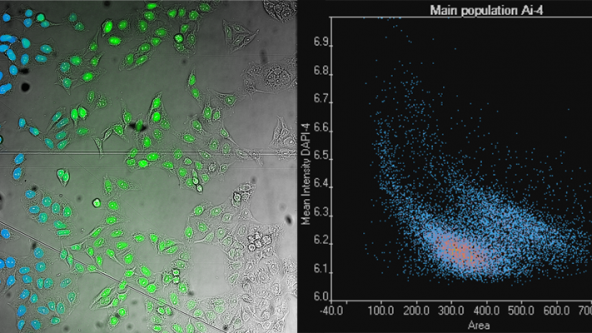
Aprendizaje profundo: Puertas abiertas a nuevas aplicaciones
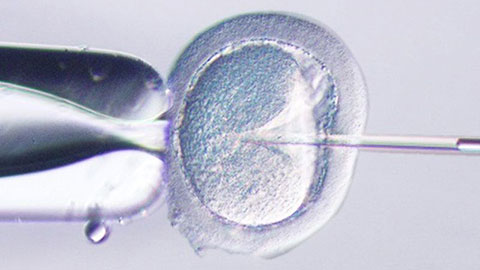
ICSI—Past, Present & Future
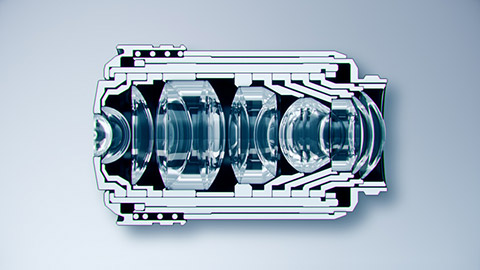
Microscope Objectives—Where the Magic Happens

Think Deep, See Deeper with Near-Infrared Laser Scanning Confocal Microscope

